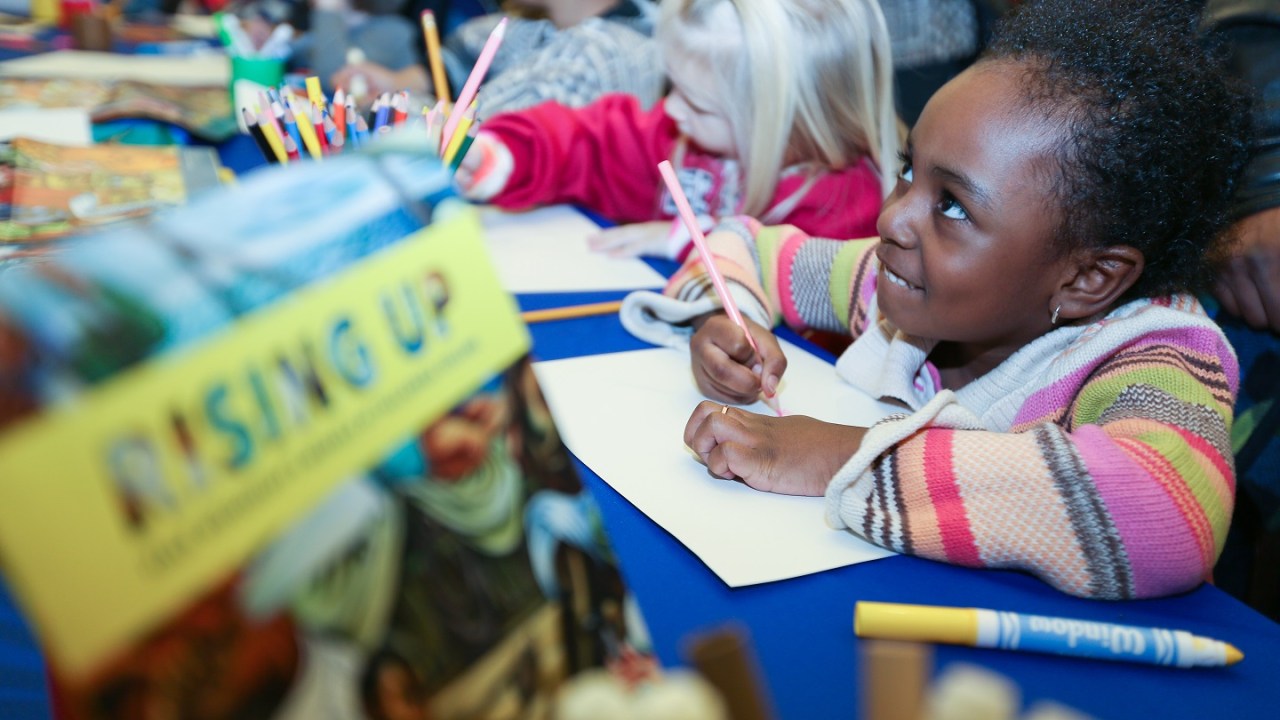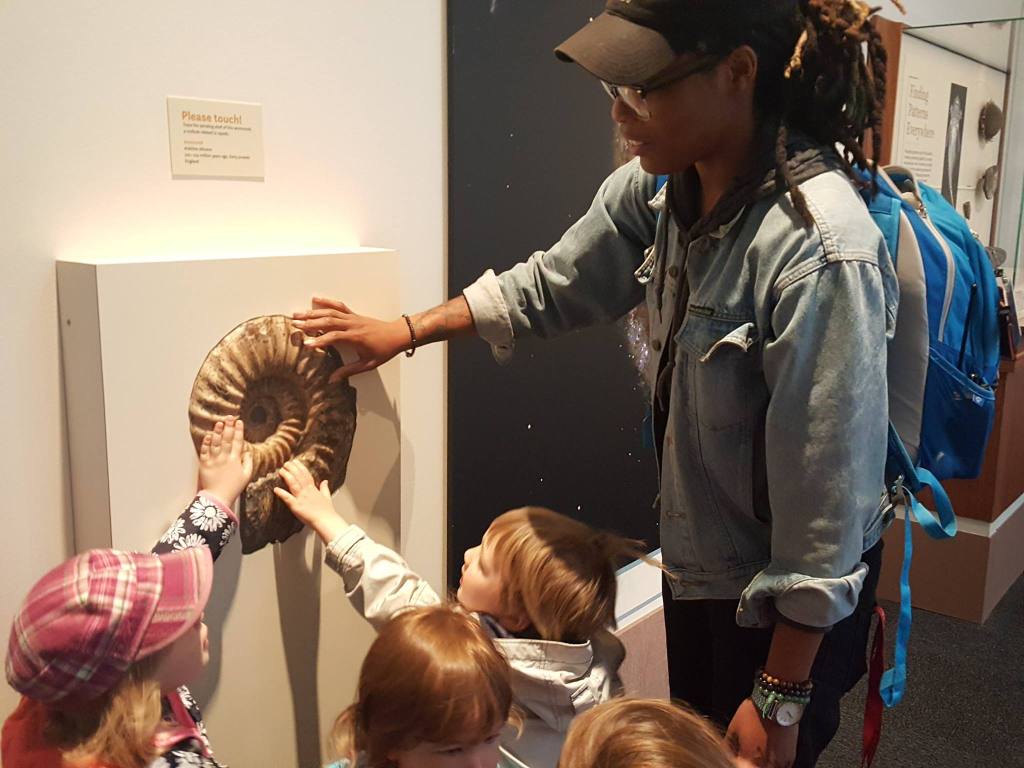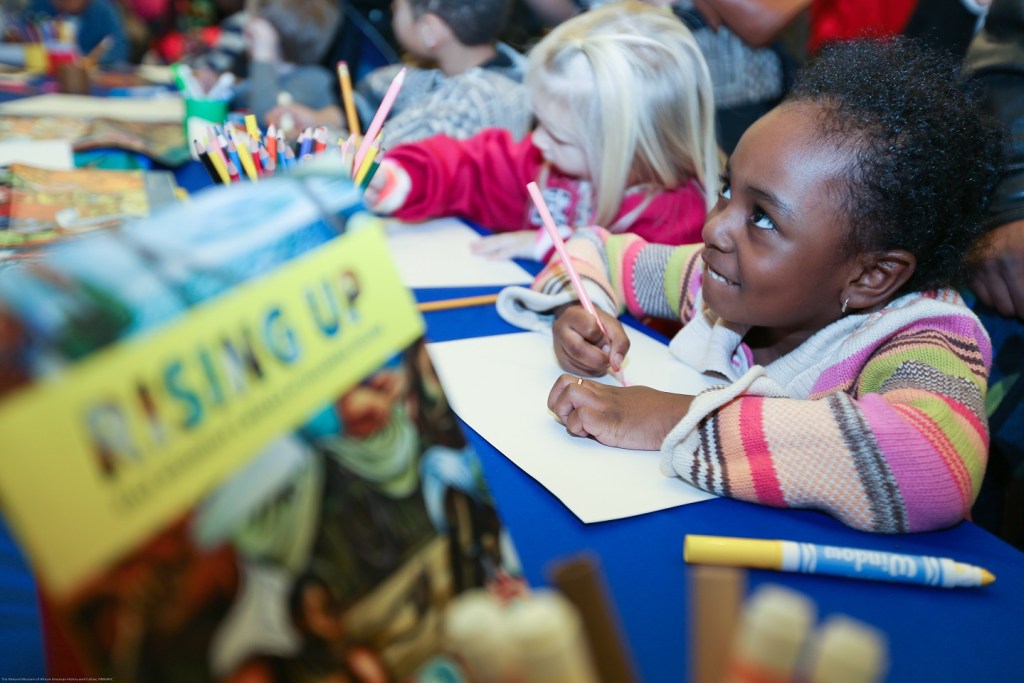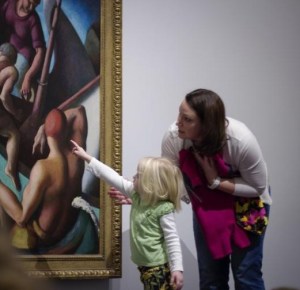
Anne Forgerson Hindley is the Supervisory Early Childhood Education Coordinator at the Smithsonian’s National Museum of African American History and Culture. Cynthia Raso is Assistant Director of the Center for Innovation in Early Learning at the Smithsonian Early Enrichment Center. Tiffany McGettigan is an ARTLAB+ Educator for the Hirshhorn Museum and Sculpture Garden.
Over the last three decades, many museums have actively sought to embrace diverse audiences, focusing on inclusivity, learning, and community. Young children have emerged as a key audience, a move that is underscored by recent research about the importance of learning and brain development in early childhood (birth-8). Today, there is a growing conversation about how museums can serve young learners. The Smithsonian Early Learning Collaborative, a group of early childhood educators, has been working over the past six years to explore and support early learning in museums. As the topic of early learning becomes increasingly important, we want to help museum professionals (at every level!) recognize how historically adult spaces serve children and why we should all seek ways to engage our youngest visitors.

Museums: Their Learning Environment and Young Children
Museums are ideal spaces for young children to learn. They allow children to explore their interests through authentic objects, hands-on exhibits, and activities. Museums also provide early learners interactive and multisensory opportunities –honoring the concrete, active way children learn.
Children can make personal connections to their own interests in museums. A child who loves fire trucks, for example, visits the 19th-century fire pumper at the National Museum of American History

Her love of fire trucks propels her to want to learn more. As she examines and walks around the pumper her brain makes a strong connection to the real object. While she might not fully understand the pumper’s history, she can understand that it is similar to a contemporary fire truck.
Her understanding of the pumper can be enhanced through interactive experiences, particularly those that engage the senses. We know that young children construct knowledge using their senses. For example, the girl at the fire pumper might wonder how the wheels would have sounded on the road, what the wood feels like, or how much water the pumper might have held. By engaging her senses, she is able to form a picture of how the object was used. Her experience with the fire pumper is one that could potentially stay with her for a lifetime, enhancing not only her understanding of the object but also her appreciation for museums.
Growing Young Citizens
Museums can also help young children make sense of the world and begin to expand their thinking in new and complex ways. A concrete object provides the foundation to be able to understand abstract ideas. For example, the National Museum of African American History & Culture’s early childhood education unit uses the museum’s collection and stories to talk about race, identity, and history with children. The painting Walking by Charles Alston inspires a conversation with a group of four-year-olds about how everyone makes a difference and the importance of speaking out against injustice. By telling the story of the Montgomery Bus Boycott through this painting, children are introduced to the concepts of fairness and history and begin to see their role in society. When museums engage young children in these types of experiences and conversations, young children are better prepared to be global citizens.

The Benefits of Focusing on Young Children as an Audience
In the 21st century, museums have started turning to the community to remain relevant and successful. By being welcoming and responsive, visitors feel more connected with the museum and the collection. For young children, community is essential to learning. As museums have become more municipally-minded, young children–and the community that comes with them–are transforming the museum experience.

Early learning programs increase visitor engagement across age groups, including adult visitors. Although it may seem that these programs are only serving children under age eight, educators in the Smithsonian Early Learning Collaborative observe that older children and the adults who accompany them engage more enthusiastically with museum collections as a result of early learning programs. Why might this be?
Museums’ institutional expertise can make them intimidating to visitors of all ages. Adult visitors have been known to confess that they “don’t understand what they’re seeing,” when looking at some artworks and objects, or that they “feel like they’ll give the wrong answer.” Inviting children into museums changes this dynamic of trepidation. Children are open-minded, creative, and willing to share ideas generously. STORYTIME+ at the Hirshhorn Museum invites young children to explore contemporary art. In a recent program, children examined the abstract painting Field for Skyes by Joan Mitchell.
Looking closely at the large canvas, children eagerly described different areas of color and shape, opening up a simple conversation on abstract art. Observations quickly turned to ideas. Pointing to various fields of forms and color, children imagined seeing animals, trees, and water. Taking their cue from the children, adults joined in, squinting to look at the canvas and excitedly pronounced, “Ah, I see that!” As other visitors passed through the galleries, they too, stopped and looked closely at the painting. The willingness of children to participate and imagine without fear of being wrong gives adults permission to do the same, making our collections and exhibitions more meaningful to everyone.
A child’s early years are a critically important time when they are developing key academic, social and cognitive skills that will determine success later in life. Museums are poised to nurture and support this success. By serving young audiences, museums also stand to better serve their communities and create more robust experiences for visitors of all ages. Young children are critical to ensuring the future of museums. Museum-going habits that are formed in early childhood can shape how a young child views, supports, and contributes to museums in the future. Young children are future visitors, professionals, and donors. So how does a child have a good experience at a museum? It starts with community, relevance, and meaningful engagement.
About the Authors
As the Supervisory Early Childhood Education Coordinator at the Smithsonian’s National Museum of African American History and Culture, Anna Forgerson Hindley’s work focuses on positive identity development, interrupting structures of racism and prejudice, raising healthy, courageous and compassionate children in a highly diverse and inequitable society and introducing African American history to young children in age-appropriate ways. She holds a Master’s degree in Museum Studies from The George Washington University.
As the Assistant Director of the Center for Innovation in Early Learning at the Smithsonian Early Enrichment Center, Cynthia Raso’s work explores how museums and other informal learning environments support the growth and development of young children. She holds a Master’s degree in art history from The George Washington University.
As an ARTLAB+ educator for the Hirshhorn Museum and Sculpture Garden, Tiffany McGettigan is devoted to creating radically inclusive museum spaces and programs. Her work focuses on families with young children and young people with intellectual and cognitive disabilities. She holds a Masters degree in Museum Education from The George Washington University, where she now teaches a graduate-level course on museums as learning environments.








3 thoughts on “Why Museums Should Care About Young Children”